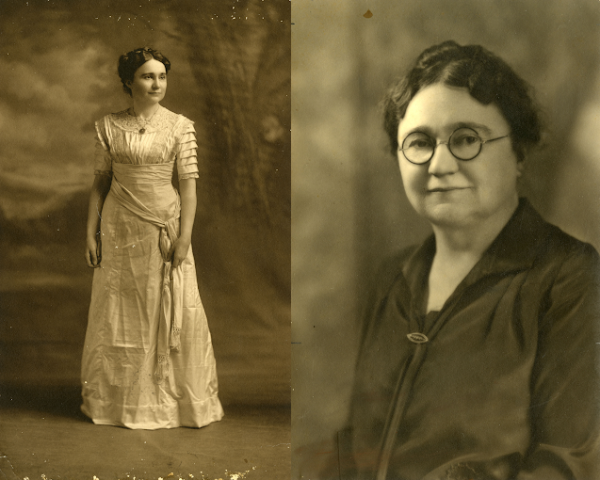Entering the world of creating digital art
Between the stress of politics, a nation currently undergoing a great influx of change and the monotony of quarantine, it can be hard to balance both productivity and mental health. We need outlets in our lives, something that can inspire creativity and give us a break from everything that weighs heavily on our shoulders. Painting, gardening, knitting, crochet, the possibilities are vast and virtually endless, but among all these options is one that has found its way into an integral part of our lives.
Digital art is everywhere. There are several communities focused around it, the most familiar being the fan art communities for different shows, comics, video games, movies and so on. It’s a big part of social media, as well as general media in forms such as animated TV shows or comic books. It gives us stories as children that we carry into our adulthood and remember fondly, or singular isolated frames of perspectives that resonate with us. Wanting to learn how to paint these emotions into solid form and share it with others is a natural longing, but where do you start?
It’s easy to feel discouraged when you’re just starting out. Drawing programs have such a large amount of options and tools that trying to find out what they all do and how they all connect is overwhelming. When you’re constantly surrounded by such talented and influential artists on your social media feeds, it’s easy to lose confidence by constantly comparing your work to theirs. So, for those seeking to find a place to start or perhaps just a better understanding, here’s a guide for you, designed by someone who also struggled when they first began their digital journey.
Step One: Don’t be harsh on yourself.
The first step is to give yourself breathing room. It’s okay to make mistakes; it’s okay to improve. The first try doesn’t have to be perfect, and in fact, it’s better if it isn’t. Mistakes are how we learn, and the more you make the better you’ll become, so celebrate your errors as much as your successes and don’t let them drag you down.
Give yourself time, too. It takes time to pick up new skills, and there isn’t some countdown clock ticking down in the background for this. Go at your own pace; it’s not a race, so don’t compare yourself to others. Moreover, while it’s okay to critique yourself, learn to also see the things you’ve done right and focus on things you like in your art as well.
Art is a safe space. It is an expression of self, and there is really no wrong way to be you. Be kind to yourself. Nurture and encourage your own growth as you would for others.
Step Two: Equipment and Setup
Despite the intricacy of digital art, it doesn’t take much to get started. There are a variety of free programs available to get you started, as well as different brands of affordable drawing tablets and pens.
Some free programs to look at that are pretty user friendly are Fire Alpaca, Procreate and Krita. Krita in particular has a rather nice layout and is generally easy to navigate while also providing a wide variety of brush types and styles. Fire Alpaca is also easy to navigate, and although its base program doesn’t offer quite as much variety as Krita does, that can be easily resolved by downloading different brushes and setting them up in your program. Procreate is very nice and has a wide base selection of brushes, although the layout takes time to figure out and navigate.
It is important to familiarize yourself with the basics of your program before you start drawing. Fortunately, this is fairly easy to do. Tutorials for these programs and more are readily available on Youtube, and a good way to learn the different brushes and tools is to do some coloring pages. Another important step is to get used to using a drawing tablet or a tablet pen to draw. It won’t have the same feel as drawing on paper, so it’s best to familiarize yourself with the smoother pen strokes on a tablet and the pressure sensitivity of the pen while you’re figuring out the ins and outs of your chosen program.
If you’re using a program on a computer or laptop, chances are you’re going to need a pen or tablet. Drawing digitally with a mouse isn’t particularly easy. Unfortunately drawing tablets for computers tend to be pricey, with high quality tablets easily costing at least $100. Fortunately, for those who want to create digital art as a hobby rather than a job, or for those who are just starting out, there are more affordable options.
Wacom tablets tend to be the standard, but they can be pricey. However, Huion is another good brand and offers some alternatives that offer good quality at more affordable prices. The Huion Inspiroy H640P is a good starting tablet and retails for about $40 on Amazon. It has good pressure sensitivity and six keys you can use to access your favorite or more used shortcuts, like the undo or redo stroke functions. It also offers Android support and is a pretty decent size.
The XP-Pen Star G640 is another good $40 alternative. It also has nice pressure sensitivity and is very portable. On the downside, the XP-Pen Star is a bit smaller and, as such, is better for smaller displays and might take a bit more adjustment on bigger monitors. However, being smaller, the device will be easy to pack away and take with you. With programs like Procreate that can be downloaded on the iPad, Apple Pens or pens that work with the iPad tablet can work just as well.
Brush sets are also customizable. You can buy brush sets created by other artists on websites like Etsy, Procreate Brushes, Sellfy, Gumroad and more. Depending on your media feed, Instagram may also give you ads about artists that are selling brush packs, and may provide links to these brush sets. Normally, brush packs will tend to be in the $10-$15 range, but you can find free sets as well. There are Youtube videos and online guides for how to download and use your brushes, and even guides on how to create your own brushes if you would like.
This may all sound daunting, but learning how to navigate a program is one of the most fun parts of digital art. It’s all about experimenting and goofing around, and this is one of the phases in which making mistakes is rather the main point. The more mistakes you make, the more you find out, and the more you can do!
Step Three: Practice and Style
Once you’ve got a decent grip on your program, it’s time to start your art! Again, practice makes perfect is true here, but also watch what kind of practice you’re doing. It isn’t the amount or quantity of practice, but rather the quality of your practice. This means that you won’t get anywhere by simply drawing spirals or squares or middle school S shapes, but by doing different things. Implementing different techniques, drawing from different angles and perspectives and using different textures that you usually wouldn’t. Practice the things that push your skills and help you grow.
A useful trick is perhaps one that some will feel hesitant about. Tracing is a wonderful way to practice. It helps you learn proportions, style and how to be consistent. The issue comes with claiming your traced work as original art. Tracing is meant to be solely for practice. One productive way to utilize tracing is to trace a drawing, go to a blank space and try to freehand draw what you trace and then transpose your freehand work over your traced work and see how close you get. Finally, figure out where you need to improve and repeat the process. Always relying on a guide won’t do you much good, but learning to draw freehand with your guide as a way to gauge your improvement will help.
In art of any sort, you should find your own style. The thing is, you can’t really find your own style unless you expose yourself to the styles of other artists. See what you like and what you don’t, and what you might like to combine into something of your own. A great way to do this is to follow art accounts on Instagram, Twitter, Youtube and other social media. Most of the time you will find artists who have been drawing and developing their styles for years, as well as a lot of names that have worked in major films, games, comics and more. Find an artist whose shading catches your eye. Look for one that plays with color in a way you appreciate, and another who gives character or presence to their work. Absolutely dive in and find yourself, gather references and start building your style from what you like.
Art is all about exploration and drawing inspiration from your surroundings. Creativity is part self and part community, so don’t think that every spark of ingenuity has to come from you and you alone. Let other people help you.
Step Four: Technical Skill
This comes along with practice and discovering your style. Technical skills include knowing where to place shadows and highlights, how to draw from different angles and how to blend and color skin, hair and eyes. Thankfully, Youtube is a wonderful resource. Tutorials are easy to search for, but watching speed paints is also a good idea. Speed paints are videos where an artist does a sped-up time lapse of an art piece they were working on. This can help you to see what steps the artist goes through; what layers they put their colors in, how they edit line work, when they blend and where. More importantly, speed paints also show all of the minute adjustments, erasing, and complete re-drawings of the process. They help to show that art is never a straight line from point A to point B. Even people who have been doing digital art for years, either as a hobby or professionally, make mistakes and have to adjust their work. No one is perfect, and you shouldn’t hold yourself to a standard that not even professionals can reach. Technical skill takes time to develop, but again, the goal isn’t to be perfect. It’s to enjoy yourself.
Digital art is a great skill to pick up and it’s a wonderful way to relax, express yourself and find your center in such a turbulent world. Create something you are proud of and that makes you happy. So have fun! Take it at your pace, and go easy on yourself.









